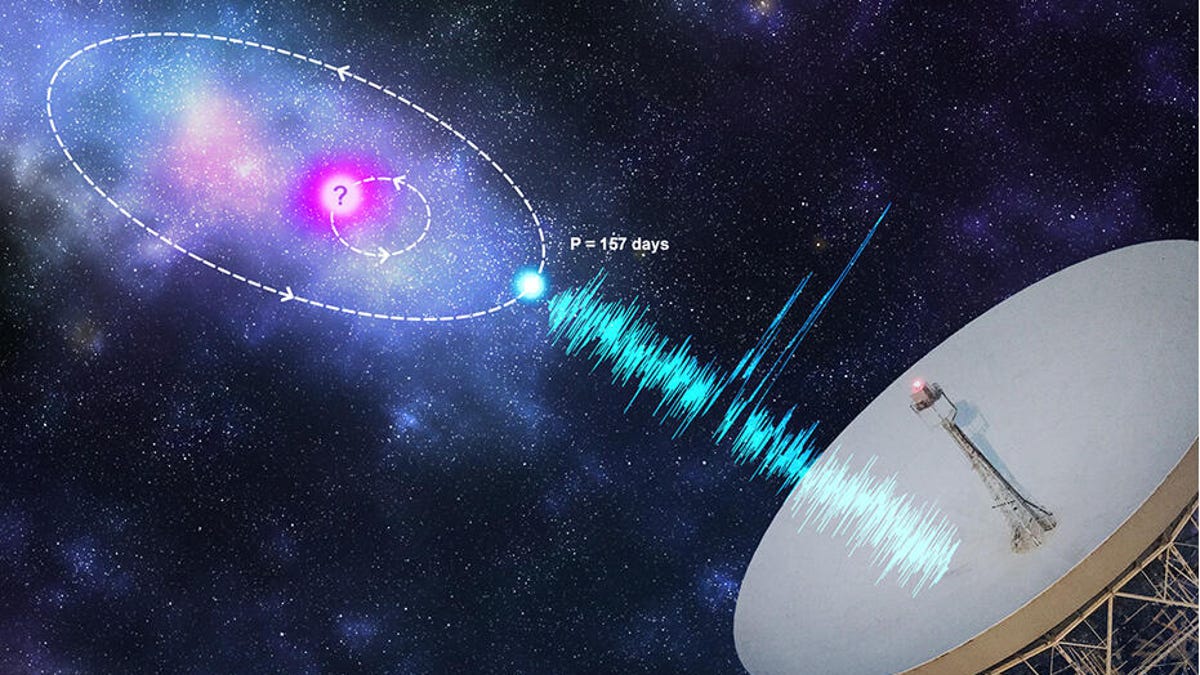Second mysterious, repeating radio burst from space keeps scientists guessing
It's the second time a fast radio burst has been found to repeat in a regular rhythm.

An artist's impression of an orbital modulation model shows the FRB progenitor (blue) in an orbit with a companion astrophysical object (pink).
For the second time, astronomers detected a consistent pattern in a fast radio burst from somewhere in deep space. The first such pattern was discovered in a different FRB back in February.
Now scientists say they have details on the habits of FRB 121102, which repeats every 157 days, according to a study published in the journal Monthly Notices of the Royal Astronomical Society.
This FRB was discovered in 2012, and researchers noted its repeating nature in 2016. The source is a dwarf galaxy more than 3 billion light years away. The pattern might be the result of a massive star, a neutron star or black hole's orbital motion.
"This is an exciting result as it is only the second system where we believe we see this modulation in burst activity," the University of Manchester's Kaustubh Rajwade, who led the research, said in a release. "Detecting a periodicity provides an important constraint on the origin of the bursts and the activity cycles could argue against a precessing neutron star."
FRBs remain mysterious -- they were first discovered in 2007 -- but each new one offers astronomers a better sense of their origins. We know what you're thinking... aliens, right? It seems unlikely that would be the case, according to Swinburne University of Technology astrophysicist Adam Deller.
"I think in all likelihood we'll work out a natural explanation for these events, but I like to keep an open mind and follow wherever the evidence leads me," he said of the first repeating burst.
When it comes to the origins of FRB 121102, Rajwade told CNET that one good guess is a neutron star.
"Based on the short durations and the high luminosities of the bursts themselves, a good guess would be a neutron star with a very high magnetic field that is orbiting a companion object," he said.
Read More: 7 best stargazing apps for spotting constellations in the night sky

